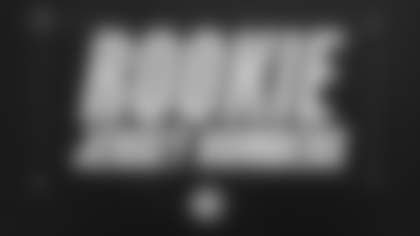(A series looking at the top players at various positions leading up to the 2012 NFL Draft, set for April 26-28.)
Today, the correct choice – or the disastrous choice – is obvious. Drew Bledsoe or Rick Mirer? Peyton Manning or Ryan Leaf? Tim Couch or Donovan McNabb? Alex Smith or Aaron Rodgers?
Indeed, it's obvious now, but at the time, the decision teams were making between the two top quarterback prospects in a particular draft often seemed to be as close as a coin flip.
This year's version is: Andrew Luck or Robert Griffin III?
It doesn't seem as though there will be any real loser in this choice, and with a couple of weeks still remaining before the decision has to be made the Indianapolis Colts were reported to be leaning toward Luck because he is considered the safe pick, with the Washington Redskins tickled to be left with Griffin. Five years from now, will those teams see this the same way? Will one of those teams be portrayed as a loser for the decision it made?
If the Colts go ahead and choose Luck first overall, they'll be getting a guy who completed over 70 percent in each of his final two college seasons to go along with some 6,800 yards, 69 touchdowns and 17 interceptions over the same span. Luck seems to have everything to be a great quarterback, except maybe difference-making arm strength, and that could become an issue as the weather gets raw in December. But if it is to be Indianapolis for Luck, he'll be playing at least 10 games a year indoors.
Griffin is the better athlete, and here is the evidence: As an early enrollee at Baylor, he earned All-America honors in outdoor track and field – the 400 meter hurdles was his event – before his freshman season. Another thing that makes Griffin unique is that he graduated from Baylor in three years, will finish his master's degree in communications this spring and plans to attend law school sometime in the future. Griffin completed 72.4 percent for 4.293 yards, with 37 touchdowns and six interceptions during a 2011 season in which he won the Davey O'Brien Award and the Heisman Trophy.
The last time that the first two overall picks in a draft were quarterbacks who then both went on to productive NFL careers was in 1971 when Jim Plunkett went first overall followed by Archie Manning, and this looks like it could be a repeat. But again, that's what most people believed would happen when Indianapolis and San Diego were choosing between Manning and Leaf.
Anyway, there will be other quarterbacks drafted early this year, and there will be other quarterbacks drafted in the first round. The question that only time will answer has to do with whether these players deserved to be No. 1 picks or were made No. 1 picks by teams desperately looking for what they don't have.
The next tier of quarterbacks includes Texas A&M's Ryan Tannehill (6-foot-4, 220) and Oklahoma State's Brandon Weedon (6-4, 220), with Arizona's Brock Osweiler (6-7, 240) making a rapid run up some teams' boards.
Tannehill started at the position for only two seasons, but that was because he began his career at Texas A&M as a wide receiver. In his 19 college starts as a quarterback, Tannehill passed for 5,382 yards with 42 touchdowns and 21 interceptions, and his lack of game experience at that level probably will mean he will need time to hone his mechanics before he's fully NFL-ready.
The issue with Weedon has to do with his age. He's 28 after a failed attempt as a minor league pitcher, but he will arrive in the NFL with a strong and accurate arm. Weedon was 23-3 as a starter, and he passed for 9,000 yards with 71 touchdowns and 26 interceptions in those starts. But he will come to the NFL having played almost exclusively in the shotgun, and the offense he ran in college was extremely friendly to a quarterbacks' statistics.
Osweiler is big and has the arm strength to succeed in the league, but he was a starter for only one full season at Arizona, he was 7-8 as a starter , and he threw five of his 13 interceptions during his final three college games. Clearly a developmental prospect, Osweiler's NFL career could come down to whether he is over-drafted. If a team spends a high pick on him, he might get rushed onto the field before he's ready.
Two other interesting players who could find successful careers as backups in the NFL are Michigan State's Kirk Cousins (6-3, 215) and Wisconsin's Russell Wilson (5-11, 205).
Wilson started his college career as the Scout Team Player of the Year at North Carolina State and ended it by leading Wisconsin to the Big 10 championship, and in between he was a guy who got by more with his intangibles than overpowering raw skills. Cousins has been compared in style to 49ers starter Alex Smith, and he is a hard-worker and classroom junkie who had a 3-0 record as a starter against arch-rival Michigan.
THE 2011 NFL DRAFT, QB STATISTICS
Number drafted: 12
Picks by round: 4 in the first; 2 in the second; 1 in the third; 0 in the fourth; 3 in the fifth; 1 in the sixth; 1 in the seventh
Highest pick: Cam Newton, Auburn Round 1, 1st overall, by Carolina
Biggest impact: Cam Newton started all 16 games for the Panthers and was voted Offensive Rookie of the Year















